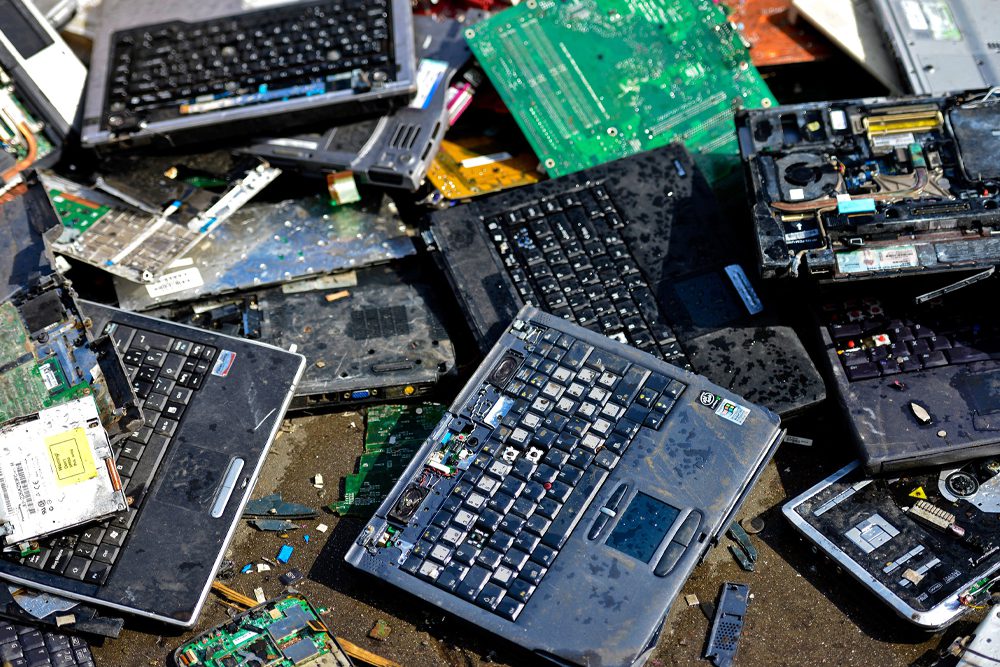Unwanted Technology is Harming the Environment
Worldwide, there’s a major lack of awareness on how to properly recycle electronics. When people toss their old devices in the recycling bin, they think they are doing the right thing—but in reality, they’re unknowingly adding to the growing e-waste problem. What some don’t realize is those discarded electronics need to be taken to a certified recycling center to be properly disposed of. Since this isn’t common knowledge, these unwanted electronics usually end up as toxic waste in landfills polluting the environment, and this is happening at an alarming rate.
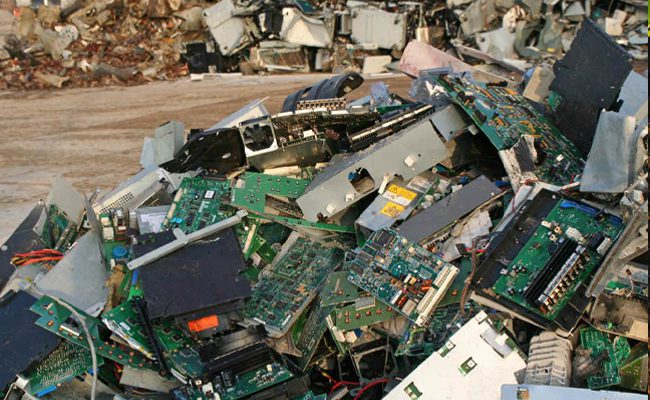
Luckily, resources and organizations exist that aim to educate people on this issue and help customers and companies safely dispose of old equipment to prevent further harm to the planet.
No Federal Laws Exist
In the United States, there are no federal laws requiring e-waste recycling. 25 states and Washington D.C have enacted laws regulating it, but the majority still lack requirements, meaning most discarded electronics end up in garbage and recycling bins where they don’t belong. Even if rules do exist, it’s on the customer to dispose of their devices responsibly. As much as they try to do the right thing, most of their devices end up in the wrong place.
How Bad is It?
To give you an idea of the magnitude of the problem, consider this: at ERI, a recycling plant in Fresno California, about 6 million pounds of discarded electronics are processed monthly. That’s an astounding number, and that’s only at one recycling plant. Imagine how many electronics are discarded around the world every day. An even more staggering number, 53 million metric tons. That’s how much e-waste was produced in 2019 alone. E-waste is more harmful than other waste since it contains a laundry list of toxic materials: mercury, lead, beryllium, brominated flame retardants, and cadmium. Even if you’re not certain what all those materials do, trust us when we tell you it’s not good for the environment or your health. To make matters worse, many rich, developed countries export their e-waste to developing countries in Asia and Africa to get rid of it. In these countries, where no regulations or rules exist, workers dispose of the waste by incinerating it. In doing so, they release toxic chemicals into the air and soil posing serious health risks and further damaging the planet.
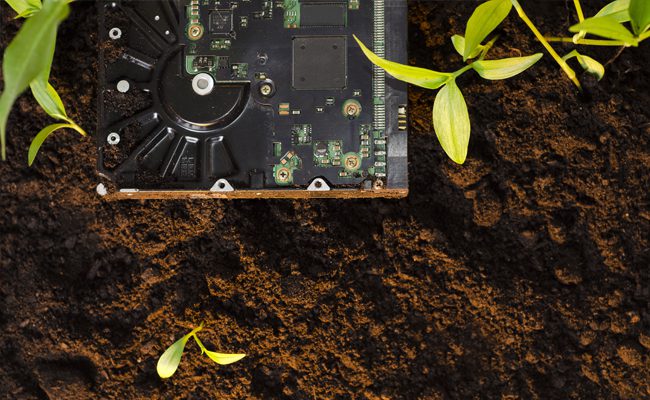
What Can Small Businesses Do?
We all contribute to this problem, but there are steps we can take to make our businesses and products more sustainable:
Make Repairs
Right now, a consumer rights push known as The Right to Repair movement wants to allow customers the ability to repair their own devices. Advocates believe businesses should make their parts, tools, and information available to consumers and repair shops to keep them from ending up in a landfill. As a business, you can make it easier for your customers to repair or replace broken or damaged equipment by providing them with the tools and resources necessary to do so.
Partner with a Recycling Company
It’s important to remember that electronics can’t be disposed of in regular recycling bins, since electronics contain harmful toxins like mercury and lead. Partner with a recycling company to ensure your hardware is safely disposed of and doesn’t inflict further damage on the planet.
Donate Old Equipment
If you’re looking to upgrade your hardware or get rid of old equipment, consider donating it to your local community rather than discarding it. By doing so, you’ll not only help your community, but you’ll keep your old technology from ending up as toxic waste in a landfill.
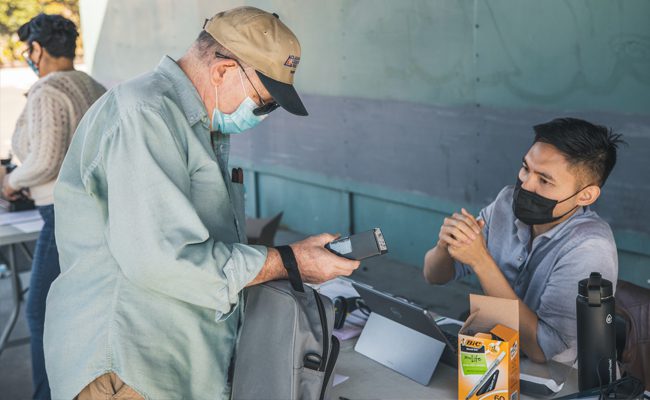
Two Problems, One Solution
While the e-waste problem continues to grow, so does the digital divide: the growing gap between those who lack access to computers and the wealthy & middle class. 82 million Americans still lack access to a computer with internet in their home. Plus, more than 4.4 million student households are without internet access for distance learning. Nonprofit social enterprise human-I-T recognizes these two problems and has come up with a solution to address them: transform e-waste into opportunities. They take in unwanted technology, refurbish it, and provide it to those in need, free of charge or at a heavy discount. Their repaired and refurbished devices are paired with broadband access to provide local communities and households with online essentials such as school assignments, job opportunities, and free online learning courses. To date, human-I-T has diverted over 6.5 million pounds of e-waste from landfills, distributed over 69,000 devices, and connected over 63,000 households to the Internet. And they are just getting started!
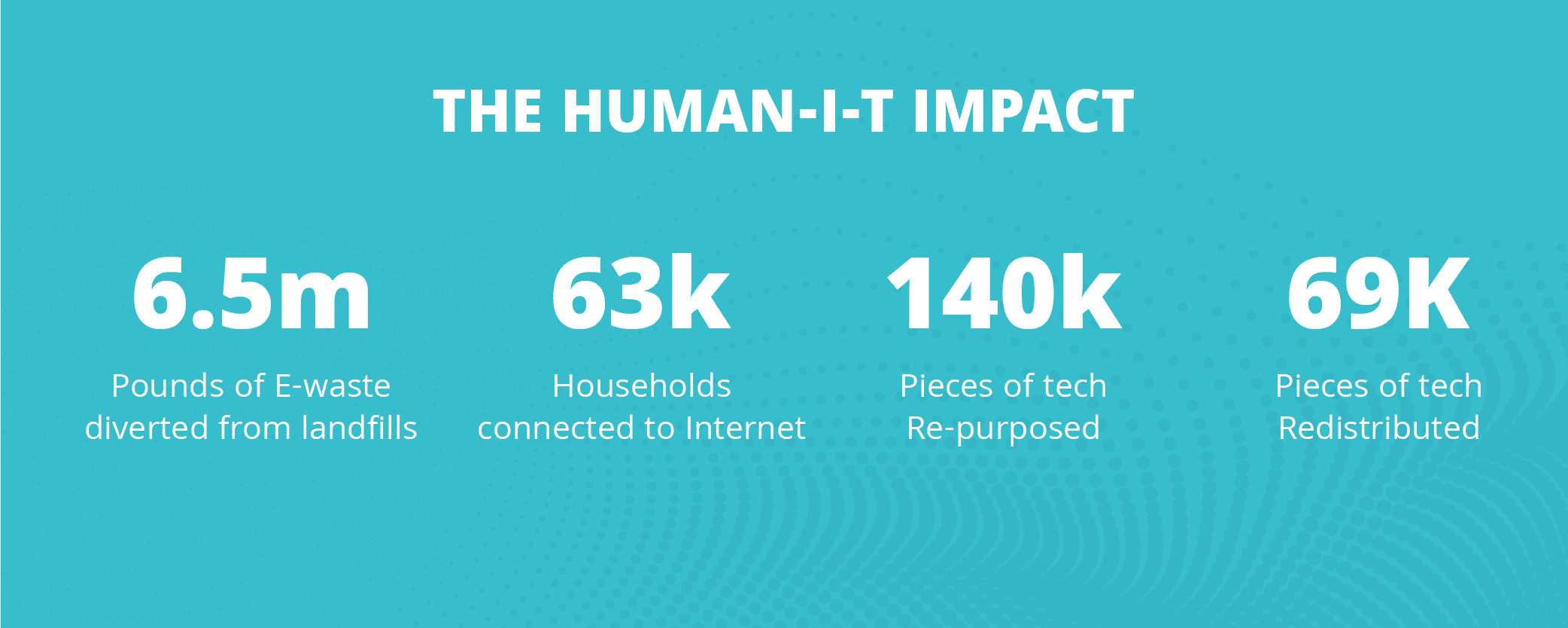
Partnering for Change
We take our responsibility to the community and environment seriously. That’s why we’ve partnered with human-I-T to provide our customers and partners an eco-friendly way to dispose of their hardware. We’re committed to do our part, even if it’s a small one, to help our environment.
Take Action
We know firsthand just how much technology can impact peoples’ lives, which is why we are strong believers that everyone deserves access to it and the opportunities it affords. We applaud the companies that are taking action to solve this global problem, but we recognize more work can still be done. Small decisions add up. If each of us make a small effort to keep our e-waste out of landfills, our collective decisions will snowball into a much larger impact. That first, small step doesn’t’ have to be anything complicated. It can be as simple as donating an old computer today.






